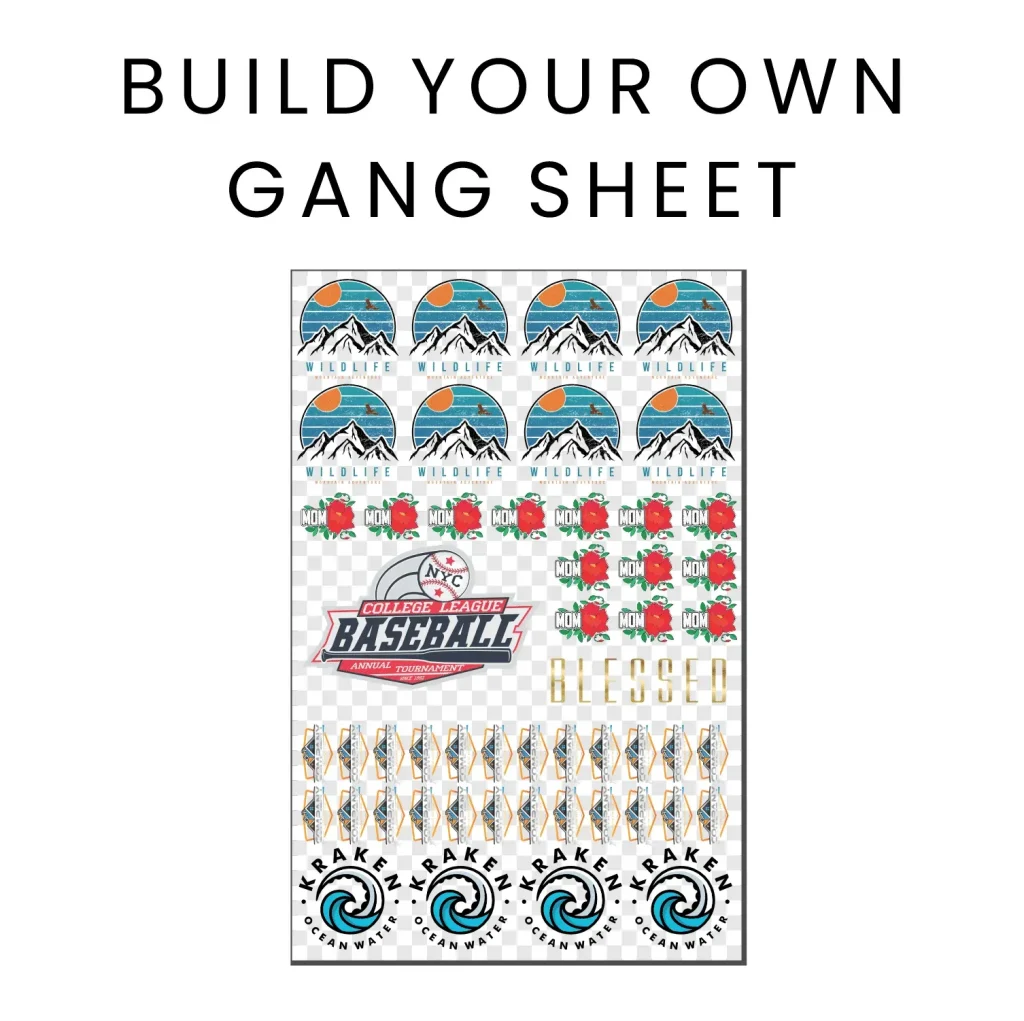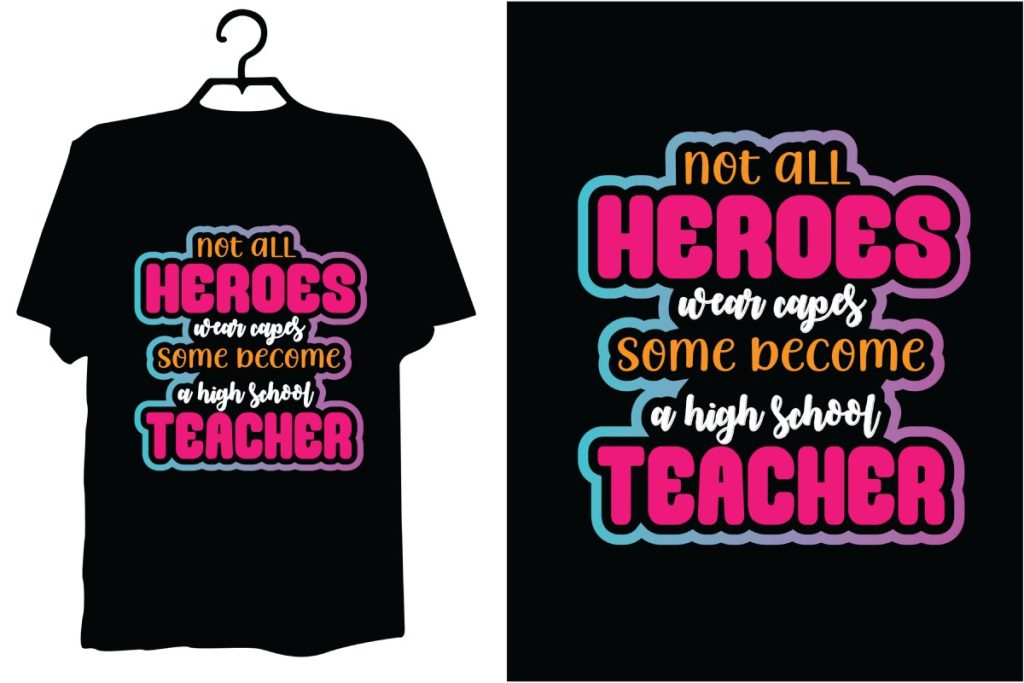DTF Gangsheet Builder brings together DTF printing tips, gangsheet design strategies, DTF workflow optimization, DTF software features, and DTF batch printing into a single, streamlined workflow for teams who balance speed with nuance and color accuracy. Using this framework, you can optimize layout planning, align artwork with grid systems, preflight for issues before you commit to ink and fabric, and create repeatable processes that scale from single orders to batch runs. The platform’s templates and automation reduce manual setup, while its color management and export controls ensure consistent outcomes across orders, substrates, and garment types. As you batch designs and reuse presets, your team gains predictable results, faster signoff cycles, and lower waste, which translates to higher throughput and better margins. Whether you run a tiny shop or a mid-sized production floor, integrating the DTF Gangsheet Builder into your workflow delivers measurable time savings and improved client satisfaction across every order.
Beyond its official name, this solution acts as a multi-design layout engine that consolidates garment templates and batch-ready assets into cohesive sheets. Think of it as a sheet composer for heat transfer printing, smoothing the design-to-print pipeline so teams can produce accurate mockups quickly. Users benefit from centralized templates, automated checks, and export presets that reinforce a reliable, scalable workflow without sacrificing art quality. In practical terms, the approach aligns with semantic-driven terminology—asset management, batch processing, color management, and prepress validation—supporting long-term production efficiency. Together, these terms illustrate the same idea of streamlined gangsheet creation and optimized DTF workflows through alternate wording.
DTF Gangsheet Builder: Smart Planning for Precise Gangsheet Design
In the fast-paced world of apparel customization, upfront planning is the backbone of efficient production. The DTF Gangsheet Builder enables you to map designs on a single sheet using a grid, templates, and alignment tools, reducing guesswork and last-minute rearrangements. This deliberate layout planning improves ink usage, minimizes waste, and creates a repeatable process you can reuse for future orders. As you line up each artwork on the gangsheet, you gain confidence in layout integrity and a clear path to production, aligning with core DTF software features that support consistent results.
A well-planned gangsheet stands up to color fidelity and downstream checks, making it a practical application of DTF printing tips and gangsheet design best practices. By forecasting placement, margins, and handling notes, you align production steps from prepress to print, which in turn fuels DTf workflow optimization. The outcome is a faster, more predictable run that satisfies customers with sharp designs and accurate color relationships across garments.
Reusable Templates: Speed Up DTF Workflow Optimization and Consistency
Treat your templates like a design system. The DTF Gangsheet Builder supports creating and reusing templates for common garment sizes, placements, and margins, dramatically reducing file setup time and placement errors. A curated library enables you to drop new designs into established layouts with minimal adjustments, boosting throughput without sacrificing layout integrity.
Clear naming conventions and version control are essential when growing a template library. This discipline enhances team collaboration, simplifies handoffs, and accelerates DTf workflow optimization by ensuring everyone references the correct files. By standardizing templates, you create a scalable framework that keeps gangsheet design lean, repeatable, and aligned with reliable DTF software features.
Batch Import and Asset Organization for Efficient DTF Batch Printing
Batch import and organized asset management are core to reducing handling time in a single gangsheet run. Import all related designs at once, then group graphics by color family, garment type, or design set using folders within the DTF Gangsheet Builder. This approach minimizes the risk of missing elements as you move from design to layout, helping you preserve the intended look across fabrics and print environments.
Before arranging artwork, verify color modes, resolution, and asset dimensions to avoid color shifts later in production. Consistent asset preparation supports dependable color relationships and reduces distressing during printing. This practice embodies the principles of gangsheet design and DTf printing tips while keeping output expectations aligned with DTf batch printing goals.
Color Management Excellence for Consistent Gangsheet Outputs
Consistent color management starts with a well-defined color space and output workflow. Work in a stable color space such as sRGB for layout, then convert to the target profile during post-processing. The DTF Gangsheet Builder often provides color management options to apply the same profile across all designs, reducing hue and saturation discrepancies and ensuring reliable color fidelity across items.
Document the chosen profiles for each client to maintain consistency across orders. This discipline supports DTf workflow optimization by shortening back-and-forth between design, prepress, and production while keeping your DTf printing tips valid for diverse fabrics. A proper color strategy empowers faster decision-making and consistent results, even as your catalog grows.
Preflight, Export Presets, and DTF Software Features for Flawless Printing Tips
Preflight is your first line of defense against costly reprints. Run automated checks and perform quick visual inspections to catch missing bleed, incorrect color profiles, or oversized art before sending files to the printer. The DTF Gangsheet Builder’s preflight tools flag issues early, safeguarding your production timeline and reducing waste.
One-click export presets for different garment types simplify the handoff to cutting or printing stages. By locking in design size, color profile, export formats, and bleed requirements, you minimize manual adjustments and accelerate throughput. This approach highlights DTf software features and reinforces DTf workflow optimization by removing repetitive steps while maintaining design integrity across fabrics.
Team SOP, Training, and Documentation for Scalable DTF Gangsheet Design
A strong standard operating procedure (SOP) ensures consistent practices from asset import to final export. Document roles for preflight verification, file naming conventions, and template storage to build a fast, reliable workflow. Regular training helps teams stay current with new features, bug fixes, and workflow changes, turning software capabilities into practical gains.
Maintaining a well-organized archive with versioned designs and gangsheet variations accelerates quick reprints, colorway explorations, and seasonal campaigns. This habit supports DTf workflow optimization by enabling rapid reuse of proven layouts and ensuring your team consistently delivers high-quality results using DTf printing tips and gangsheet design methods.
Frequently Asked Questions
How can the DTF Gangsheet Builder enhance gangsheet design and production speed?
Leverage the DTF Gangsheet Builder’s grid, templates, and alignment tools to plan ahead and lay out designs precisely. This upfront efficiency reduces last-minute changes, saves ink and paper, and improves color matching, resulting in faster, more predictable gangsheet design work and overall DTf workflow optimization.
Which DTF software features support batch printing and asset management in the DTF Gangsheet Builder?
Use batch import, organized folders, and color-aware asset handling in the DTF Gangsheet Builder. Batch processing groups graphics by color family or garment type, while checks on color modes and resolutions and reusable export presets streamline batch printing and keep assets aligned with expected output.
How does preflight in the DTF Gangsheet Builder improve reliability and reduce waste in DTF printing tips?
Preflight checks catch issues like missing bleed, incorrect color profiles, and overlaps before sending to the printer. The DTF Gangsheet Builder’s automated preflight and quick visual reviews protect color fidelity and layout integrity, reducing reprints and aligning with DTf printing tips and workflow optimization.
Why should I build a library of reusable templates in the DTF Gangsheet Builder for efficient gangsheet design?
A library of templates for common garment sizes and placements lets you drop new designs into proven layouts, speeding setup and reducing errors. This approach supports DTF workflow optimization by standardizing margins and spacing across jobs and strengthens gangsheet design consistency.
How can batch importing assets aid a single gangsheet run in the DTF Gangsheet Builder?
Import all related designs at once, organize assets in folders, and verify color modes and resolution before arranging. Batch importing minimizes file handling time, reduces the risk of missing elements, and keeps the gangsheet aligned with DTF batch printing expectations.
What steps should a team SOP include for using the DTF Gangsheet Builder to improve production?
Document asset import steps, preflight checks, naming conventions, version control, and the final export process. Pair these with regular training on new features to sustain effective use of DTF software features and ongoing DTf workflow optimization.
| Tip | Focus / Goal | Key Actions | Benefits |
|---|---|---|---|
| Tip 1. | Plan gangsheet in advance using the grid, templates, and alignment tools. | List all designs with sizes and notes; map positions with grid snap and margin guides; create a repeatable process for future orders. | Reduces guesswork, increases production predictability, and improves color matching and prepress checks. |
| Tip 2. | Build a library of reusable templates and assets. | Create templates for common garment sizes, placements, and margins; reuse across jobs; maintain clear naming conventions and version control. | Saves setup time, reduces errors, and enables scalable production. |
| Tip 3. | Batch import and organize assets for a single gangsheet run. | Import related designs at once; group assets by color family, garment type, or design set; verify color modes, resolution, and asset dimensions. | Cuts file handling time and preserves intended look across fabrics; reduces risk of missing elements. |
| Tip 4. | Standardize color management and output profiles. | Work in a consistent color space (eg, sRGB) for layout and convert to the target profile during post processing; apply the same profile to all designs; document profiles. | Minimizes hue and saturation differences; maintains consistency across orders and fabrics. |
| Tip 5. | Use precise grid snapping, margins, and safe zones for all artwork. | Engage grid snapping and margins; protect essential elements with safe zones; ensure alignment across layouts. | Prevents cropped art, reduces reprints, and speeds future placements. |
| Tip 6. | Preflight before exporting to printer. | Run automated checks; perform quick visual inspection for overlaps or clipping; assign one person to run final preflight. | Catches issues early, saves waste, and safeguards the production timeline. |
| Tip 7. | Create one click export presets for different garment types. | Lock in design size, color profile, export formats, and required bleed; use presets for cutting or printing preps. | Speeds throughput and reduces human error while preserving design integrity. |
| Tip 8. | Maintain a single source of truth for design versions and gangsheet variations. | Use clear versioning; archive older drafts; easily retrieve layouts when reprinting or tweaking. | Prevents misprints and saves time reusing proven layouts. |
| Tip 9. | Leverage batch processing for color variations and mockups. | Create batch layouts for colorways; duplicate layouts and apply color swaps; run in a single gang sheet per client. | Reduces handling time and ensures consistent color relationships across variants. |
| Tip 10. | Build a team SOP and ongoing training. | Document asset import to final export steps; assign preflight responsibilities; maintain naming conventions and templates; ongoing training. | Supports scalability and keeps the workflow fast, reliable, and adaptable. |
Summary
DTF Gangsheet Builder enables faster, more accurate gangsheet design by turning complex layouts into repeatable, streamlined workflows. By planning ahead, building reusable templates, batching assets, standardizing color management, and enforcing disciplined preflight and export procedures, you can dramatically increase throughput, reduce rework, and deliver consistent results. The tips outlined here illustrate how to leverage the core DTf software features to optimize your workflow and elevate the quality of every print run. As you apply these strategies, you will notice faster turnarounds, happier clients, and a more efficient production environment that scales with your business.



